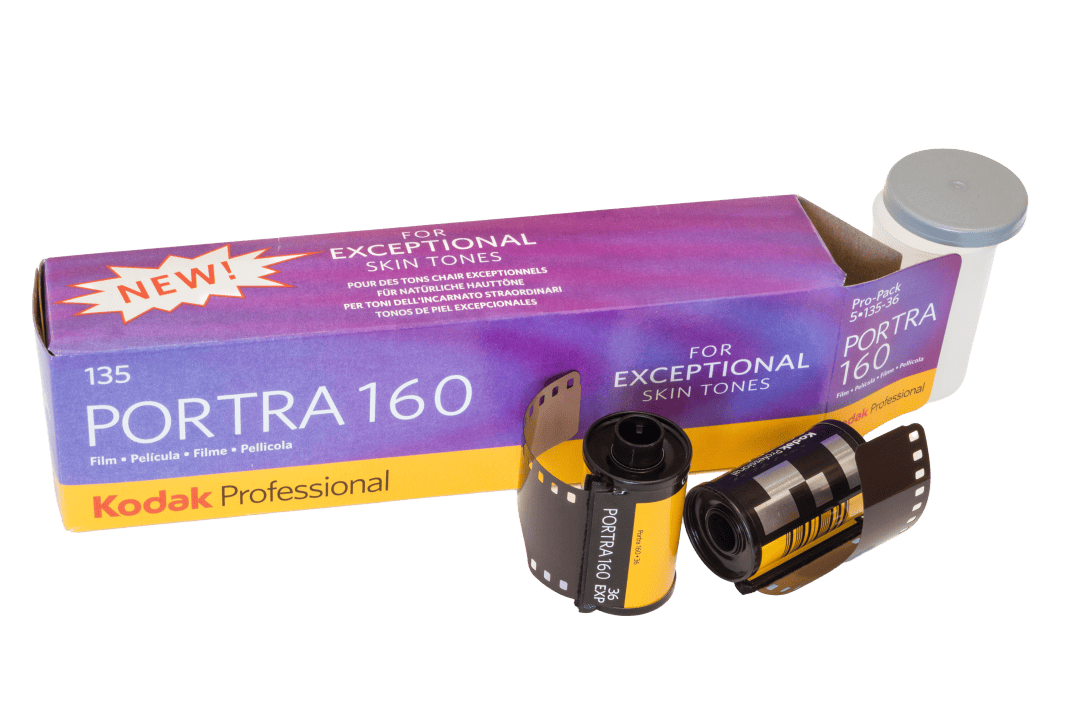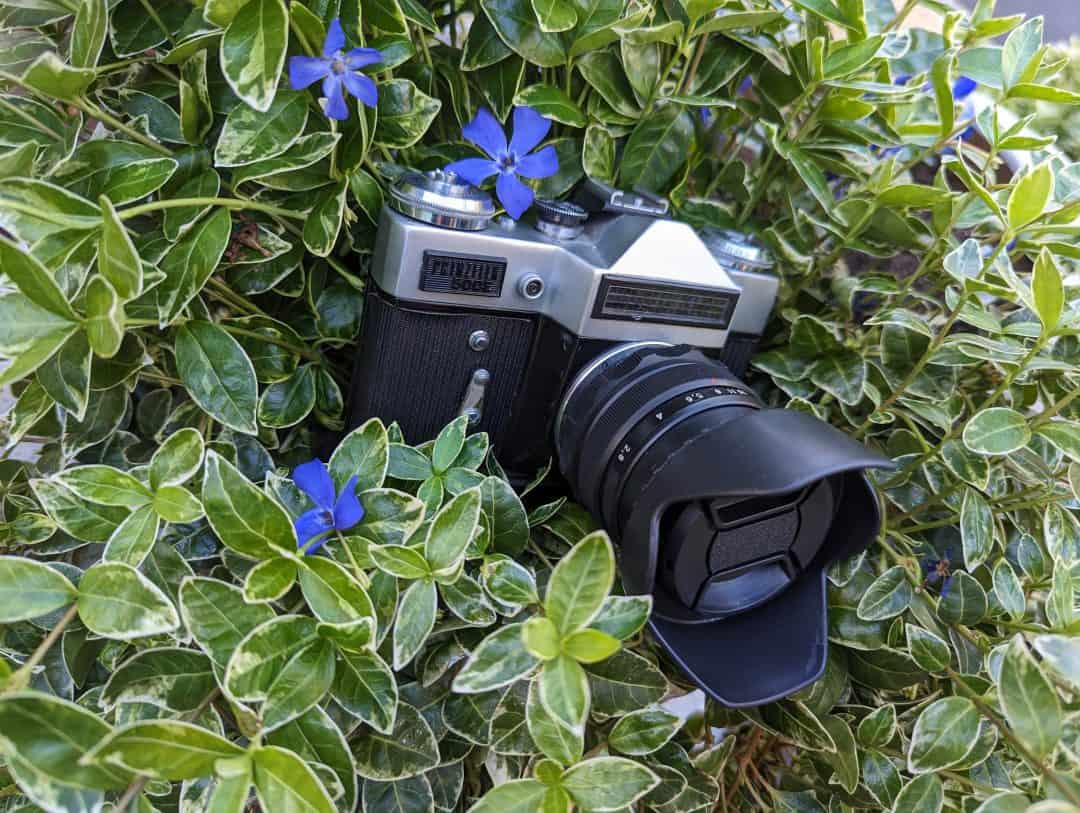Support me on Patreon for early access previews, rewards and giveaways!
Contact Me
Or use the contact form below.
Support me on Patreon for early access previews, rewards and giveaways!
Or use the contact form below.
Kodak Portra 160 is a professional-grade colour negative film designed to capture natural skin tones, fine detail, and true-to-life colours. Known for its subtly pastel-like palette and fine grain, the images typically have a dreamy aesthetic, making it a favourite among portrait and wedding photographers.
As expected from a lower ISO rating, it performs best in well-lit environments, making Porta 160 ideal for outdoor shoots and bright interiors. However, this film is more versatile than its ISO would suggest! Thanks to an impressively wide exposure latitude (reportedly -2 to +3 stops), Porta 160 can be a solid choice in challenging lighting situations!
As a relatively modern film, it has been designed with digital scanning and modern workflows in mind.
KODAK PROFESSIONAL PORTRA 160 Film features a significantly finer grain structure for improved scanning and enlargement capability in today’s workflow, while retaining the exceptionally smooth and natural skin tone reproduction that the PORTRA Film family is renowned for. – kodakmoments.com
| Type | Colour | Price | Medium/High |
| Brand | Kodak | Saturation | Low |
| ISO | 160 | Contrast | Low/Medium |
| Format | 35mm, 120 | Grain | Low |

Pros
Cons
Kodak introduced the Portra line in 1998, as a successor to its professional Vericolor films (which dated back to 1971). From their inception, the daylight-balanced Portra films were designed for use by professionals, primarily for shooting portraits and weddings.
Initially, Portra 160 and 400 were available in two versions: NC (neutral colour) and VC (vivid colour). These variations allowed photographers to choose between a softer or more vibrant look depending on their needs. In 2006 the line saw an upgrade, in response to advances in emulsion technology and a rise in digital scanning of film. At this time, the first optimisations were made for these digital workflows.
In 2010, Kodak introduced the new Portra 400 which replaced the NC and VC with a single film stock. The film incorporated some of the new emulsion technology from the Kodak Vision motion picture films. Improvements included even finer grain, improved sharpness and more accurately rendered skin tones compared to the earlier NC/VC films. Again, these improvements further aligned Portra with photographers looking to scan film and digitally adjust images prior to printing.
Following on from the success of Portra 400, Kodak repeated the process with Portra 160. A single upgraded/optimised 160 ISO film stock was released, and the existing NC/VC variants were phased out.
While I compare Kodak Portra 160 to Gold and ColorPlus, it is important to note those stocks are not classed professional films, in addition to being higher ISO (200 and 400, respectively)
Unlike Kodak Gold or ColorPlus, Kodak Portra 160 lacks the typical Kodak orange cast, meaning images have a very different and less “vintage aesthetic”. Secondly, colours are definitely more natural looking and less saturated than these stocks (and markedly less saturated than Kodak Ektar!). Specifically, the reds and greens do not “pop” as much. The film contrast is relatively low, creating a brighter and more airy feel rather than deep, punchy shadows seen in Gold and ColorPlus. Overall, the more subtle colours and lower contrast give the Porta 160 images a slightly dreamy feel.
Notably, Portra 160 exhibits minimal colour shifts when underexposed. This means that shadows retain detail without becoming overly muddy, and no funky colours appear. This is a marked contrast with what happens with underexposed Kodak ColorPlus, for example. On the other hand, overexposed images or parts of images retain an amazing amount of detail even at +2 or +3 stops.
The film’s exceptionally fine grain is particularly noticeable in areas of smooth tone, such as the sky. This allows for high levels of detail retention, producing the clean and refined look you would expect from a professional film, particularly in well-exposed images. In terms of fine-grain, professional-grade film, it compares with Kodak Ektar. However, Portra 160 features more natural colours, as opposed to the highly saturated colour reproduction of Ektar.

I shot a roll of Porta 160 during my 2023 South France Road Trip. I loaded up my trusty Zenit-E, mounted my Mir-1b lens and spent a few days shooting some fine French decay.
In four days I explored gloriously decaying thermal spas, with colourful tiles and lots of peeling paint. I wandered the corridors of once-grand chateaus, photographing elegant and well-furnished rooms. I dwelled on the details in quaint abandoned houses, hidden behind countryside hedgerows and down village cul-de-sacs.
Upon returning home, I still had a few shots left on the roll so finished it off with some favourite local spots near my home!
Here are some shots I have taken on Kodak Porta 160. Enjoy!
What photograph caught your eye the most? How did this location make you feel? Do you have a question? Let me know by leaving a comment!
Join My Adventures!
I add new content every week, ranging from exciting new locations to blog articles about my road trips. My beautiful newsletter will bring my photographic adventures direct to your inbox!
Your email address will not be shared, or publically displayed. I will only use your data to send you the newsletter, as outlined in the Privacy Policy. You can unsubscribe at any time, via the opt-out link included in every email.